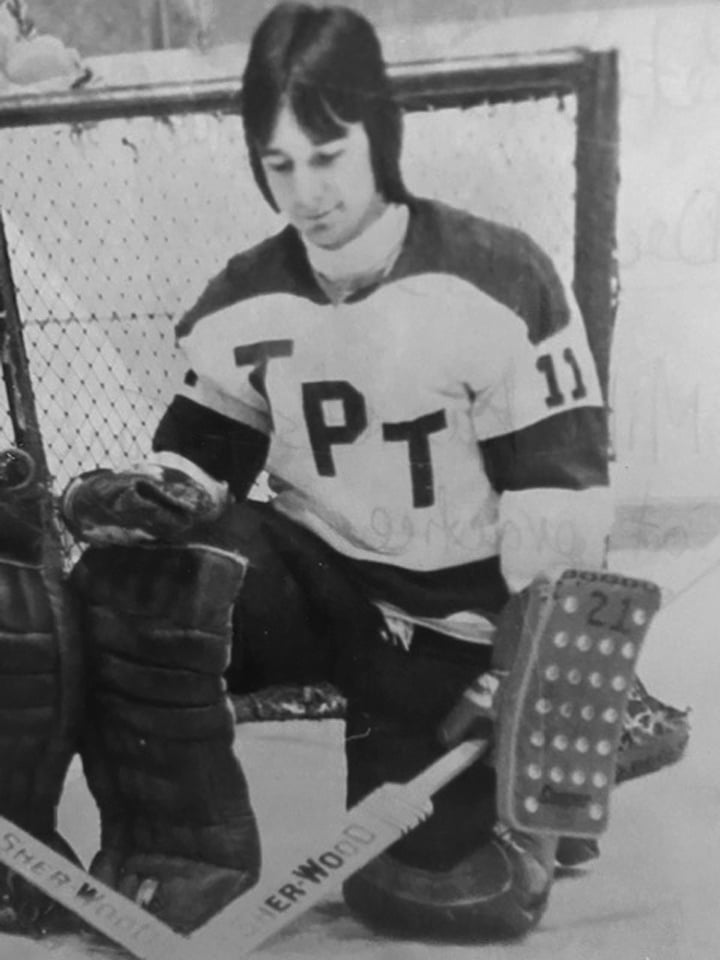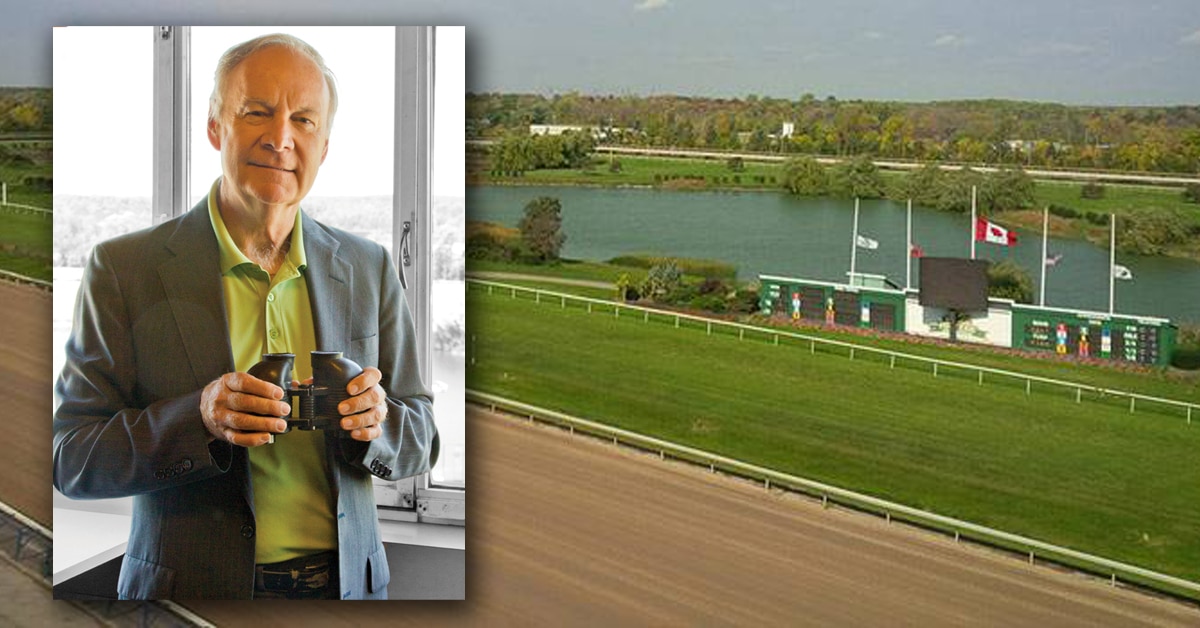Winters in the Caribbean, summers travelling the northern hemisphere to make up for all he has missed while in the announcer’s booth, legendary Canadian race caller Frank Salive has big plans now that he has retired after six years at Fort Erie Race Track, including the hope of occasional work at the Arima Race Club in Trinidad, the Royal St. Lucia Turf Club and, perhaps, Caymanas Park in Jamaica.
“What I have been doing the last six years was the 40 programs a year at Fort Erie and then five or six a year at (harness racing’s) Clinton Raceway,” said Salive, who will turn 67 in February. “I really, really loved it. I’m really sad to step away at this time, but it just seems like it’s time to scale back even a little bit more now that I’m reaching into my late-60s. Much of the impetus for retiring at this time is that the countries I want to see conflict with Canada. So, I was able to work seasonally at Fort Erie and Clinton, but I want to see places like Sweden and Denmark and number one on my bucket list, St. Andrew’s, Scotland, I don’t want to see those places in the dead of winter. So, I feel moving through my late-60s and into my 70s, that while I still have the best of health, I want to see these places.”
In the annals of Canadian sports, few people can match Salive’s varied career of sustained excellence covering three disciplines and five decades. In late October of 2021, Salive closed the latest chapter of his odyssey when he called his last race at Fort Erie.
“When I look back, it is quite surprising that I had those three lives — playing for the (Peterborough) Petes and then working for really great broadcasting outlets like CBC Windsor and then certainly (calling races for) what was known in the day as the Ontario Jockey Club,” Salive said.
The Leamington, Ontario native’s first act was playing goalie for the Ontario Hockey League’s famed Peterborough Petes, under legendary coach Roger Neilson, from 1973 to 1975. That stint included playing in the very first World Junior Championships when the Petes represented Canada in the 1974 tournament held in the Soviet Union. Canada earned the bronze medal and Salive was named the top goaltender of the tournament, an honour he has called his “finest hour in junior hockey.”
Salive was drafted 170th overall by the Pittsburgh Penguins in the 1975 National Hockey League draft, but decided to retire from hockey believing his smaller frame would not withstand the rigours of the pro game.

In 1974, Salive, the Peterborough Pete’s goalie, represented Canada at the first World Junior Hockey Championship and was named the tournament’s top goalie. (photo courtesy Frank Salive)
From hockey, Salive went into broadcasting and was assigned to report from the 1976 Summer Olympics in Montreal. At the Olympics, he had his first journalistic exposure to the horse world when he broke a story about how the hay and feed prices had been unfairly jacked up by local merchants selling to the Olympic equestrian teams.
In the late 1970s, Salive moved to Sudbury, ON to work for CTV. It was there that he had his first experience calling horse racing under the mentorship of Ken LeDrew, the announcer at Sudbury Downs harness track. It wasn’t long before Salive was off to Windsor to do radio and TV for the CBC where he worked with Marty Adler, the long-time race caller at Windsor Raceway. Salive called some races at Windsor, as well as the harness tracks at Dresden and Leamington before landing the gig as the standardbred race caller for the Woodbine Entertainment Group’s predecessor, the Ontario Jockey Club, in 1990. He remained in that post until 2006, when he left Woodbine to move to London, ON and call the races at Western Fair, Clinton, Hanover and Grand River.
In 2010, he began a two-year stint calling races and doing TV work at Pompano Park in Florida. He tried retirement in the Caribbean island of Tobago for three years, but it didn’t stick. He returned to Canada — and calling races — in 2016 when he was hired at Fort Erie. It was his first full-time thoroughbred gig, though he had filled in for Woodbine’s Hall of Fame race caller Dan Loiselle calling the runners on many occasions.
“Dan Loiselle and I were what were termed the two staff announcers (at Woodbine). As part of the job description, I had to pinch hit for him six to eight times a year. Ironically, one of the big days he had to be away was to do the Prince of Wales Stakes at Fort Erie where I actually ended up,” Salive said.
“I managed to have six wonderful years [at Fort Erie] thanks to Tom Valiquette, the general manager… It’s an ideal way to work because you’re included in the meetings, you’re part of a team feeling. You’re not just alone in the announcer booth anymore. It’s a team pulling on the rope in the same direction.”
At his peak, during the halcyon days when Ontario’s Slots at Racetracks Program was still rolling, Salive was calling 325 cards of racing a year. Lifetime, he estimates he’s called 200,000 races and called at least one at some 75 different racetracks.
Blessed with crisp, dulcet tones that earned him the nickname The Velvet Fog, Salive’s trip-oriented and insightful calls — only dramatic when necessary — also earned him the nickname The Voice of Canadian Racing for his long work on the nation’s top harness racing circuit.
He said the secret is strong memory work and remembering to try to serve all four sets of a diverse audience: the wagering public, the horsepeople, the racetrack management and the TV crew.
“The patrons, there’s a big segment of them looking at replays, so you can’t really have an off race. The horsepeople, they want a nice memory to remember their wins by — a lot of them used to take DVDs and video cassettes, but nowadays they’re all posted online on the track websites. Then the track management that hires you and pays you and the TV production team that you’re integrated into, it’s four very divergent groups that you’re appealing to as the modern-day race announcer each and every day, but it’s exhilarating to be there,” Salive said.
“I think the biggest skill is short-term memory training. When they were stepping out for the post parade at Fort Erie, that’s when I would make really close note of the cap colour and the silks and anything else you can identify by. A gray horse was always a big help, but there’s not too many of those.”
He said Ontario’s evolution to high-definition signals in recent years has helped him immensely in correctly identifying horses. As for the three distinct movements of his sporting career, Salive said he was blessed to spend most of it in the province.
“What’s remarkable to me as I’ve reached the end of the line is that I did it seamlessly going from hockey to broadcasting to racing,” Salive said. “I’m just one of those improbable success stories coming from picking tomatoes outside Leamington to having the career I was able to have because of the great jurisdiction that Ontario racing is.”


